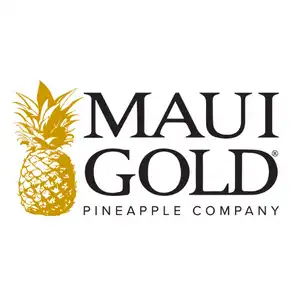MECO’s 15% Solar Threshold Raises Questions
By Anne Rillero

Solar PV panels, installed on a Kula home, are highlighted in the last rays of sunset. Photo by Anne Rillero.
The sun has been shining – both literally and figuratively – on Maui’s rapidly growing solar photovoltaic industry, with more than 1,000 solar photovoltaic systems installed on Maui’s homes, businesses and government buildings in 2011.
“We’re on pace to beat that in 2012,” says Maui County Energy Commissioner Doug McLeod.
But the exponential growth has caused the industry to confront a “15% threshold” set by the Hawaii Public Utility Commission. The threshold essentially regulates how much power from small, individual solar and other renewable energy systems can be incorporated into Maui Electric Company’s grid through what’s known as “net energy metering.”
Net Energy Metering: Making Home Solar Easy
Net energy metering has allowed solar to be financially attractive to homeowners such as UH Maui professor Doug Rice.
After installing solar photovoltaic panels on his Pukalani home, Rice was, by his own admission, “a bit obsessive” about tracking their performance via an app on his smart phone. He found that even on cloudy days, his 22 panels produced more electricity than he and his wife required.
Through net energy metering, Rice’s surplus electricity is fed into MECO’s grid. At night, the couple draws their power from the grid. Their bill is calculated on the difference between the kilowatts they provide to MECO and those they draw out. For the Rice household, the net has been $0.
Success stories like Rice’s, coupled with generous state and federal tax credits, lower equipment costs, higher oil prices and third party “no money down” financing have led to the explosive growth of solar PV on Maui during the past five years.

Large-scale solar electric installations, including these panels on the Kahului Fire Station on Dairy Road, “count” towards the 15% circuit threshold set by Hawaii’s Public Utility Commission. Photo by Anne Rillero.
The 15% Cap
Unlike mainland locations that have large industrial sectors with significant daytime power requirements, Maui’s power needs are primarily residential, with peak usage in the evening.
“As long as we have a night peak in energy usage, solar alone can’t replace other sources of power on Maui,” says McLeod.
As a public utility, MECO is mandated to provide consistent, reliable power to all of its customers. Because solar, wind and other customer-sited “distributed generation” (DG) systems do not produce consistent power around the clock, Hawaii’s PUC has issued rules regarding DG systems, which on Maui are considered to be systems producing 100 kW or less.
Per the PUC rules, the total aggregate capacity of the net-metered DG systems on each of MECO’s circuits is limited to 15% of the peak circuit demand.
Hitting the Limit
MECO’s circuits in Lahaina, Olowalu, Kahului, Haiku and parts of Kihei have reached this 15% threshold, notes Kau’i Awai-Dickson, spokesperson for MECO. She advises customers in those areas who wish to install solar PV systems to apply for a free Supplemental Review by MECO.
“The threshold is not a limit or a cap,” she emphasizes. “It is simply a trigger for the utility to take a closer look at the system being proposed to ensure that by installing this system, we are not compromising the electrical service of other customers on the same circuit.”
The utility plans to install and evaluate two battery storage systems in central and south Maui, and is working on a smart grid project to help residents reduce energy consumption during periods of high demand, which could make room for more solar installations.
A Need for More Study?
Solar advocates question whether the 15% threshold accurately reflects Maui’s actual power needs and solar production capabilities.
“The 15% threshold is a rule of thumb developed many years ago, before DG systems became popular,” explains Mark Duda of the Hawaii PV Coalition. He explains that new studies and actual rooftop performance data challenge assumptions behind the threshold.
“Hawaii’s PUC needs to rule that DG thresholds should be established on a systemic level through more study of how the power is generated and utilized,” he says. He points to the 2,000 to 3,000 workers who are employed full or part time to support the state’s solar industry as a compelling reason to reconsider the limits.
MECO recently launched an Integrated Resource Planning process involving stakeholders from all sectors of the community, to encourage discussion and evaluation on topics relating to clean energy, reports MECO’s Awai-Dickson.









